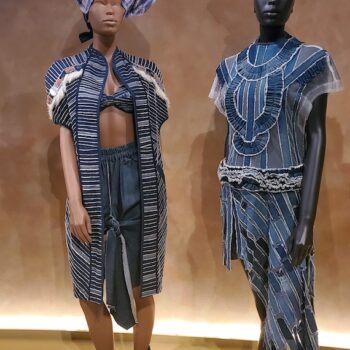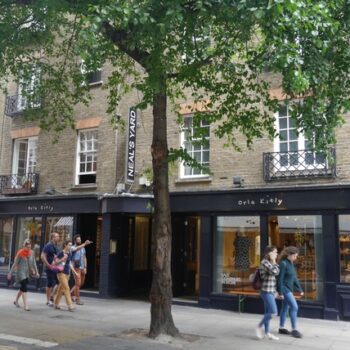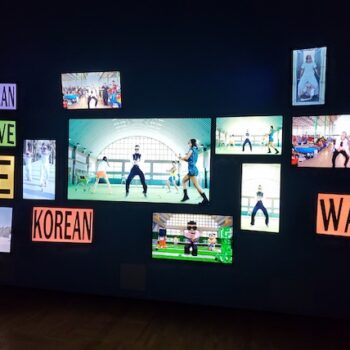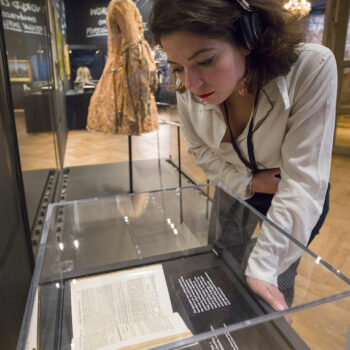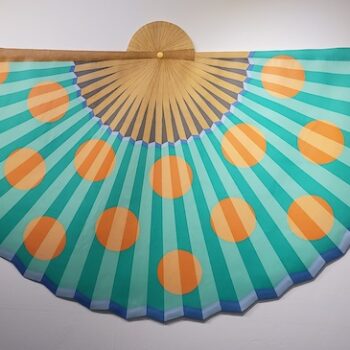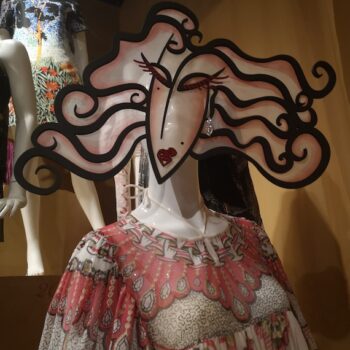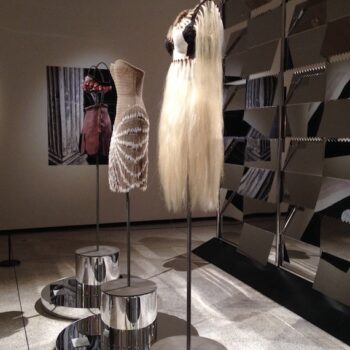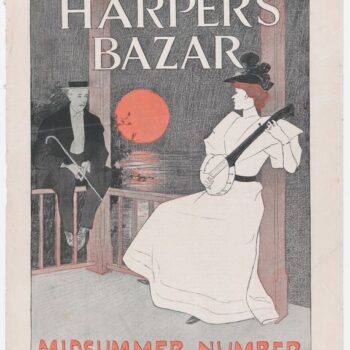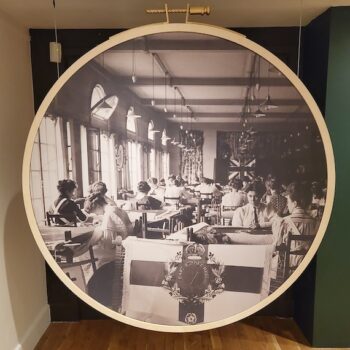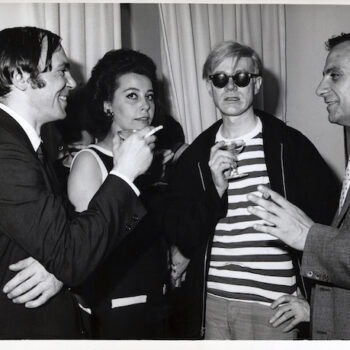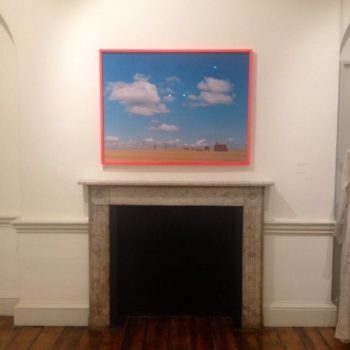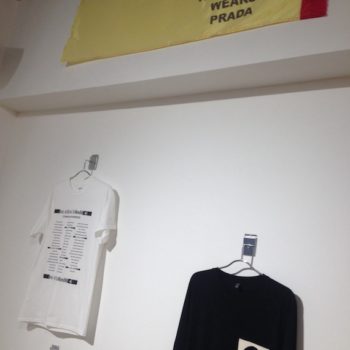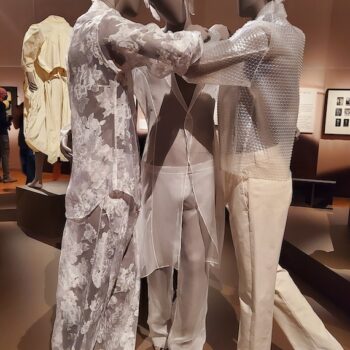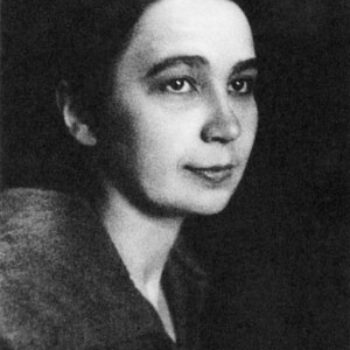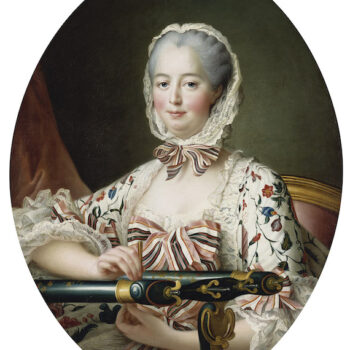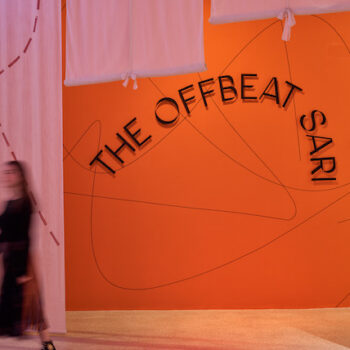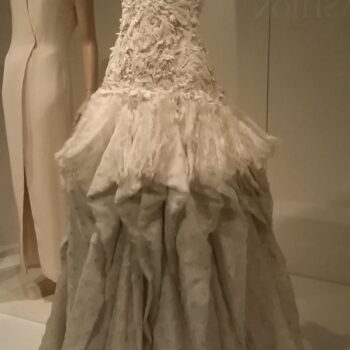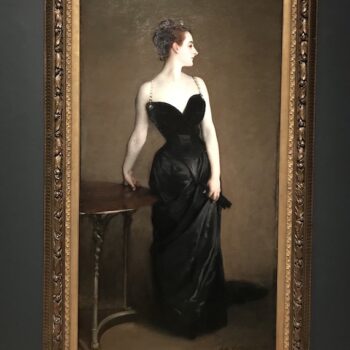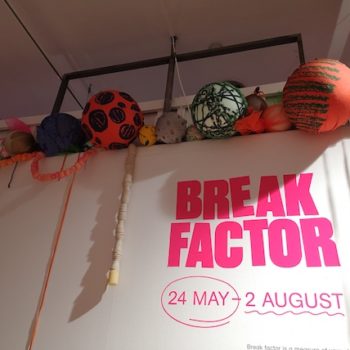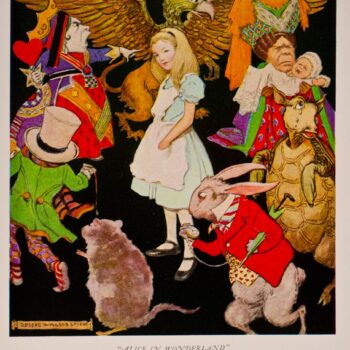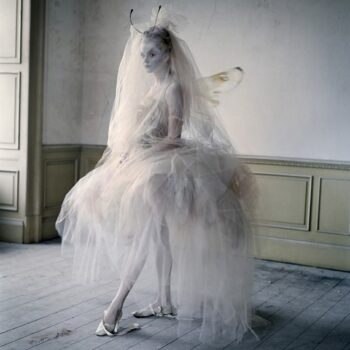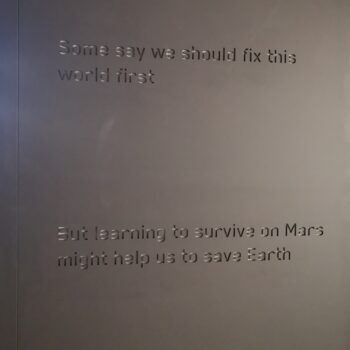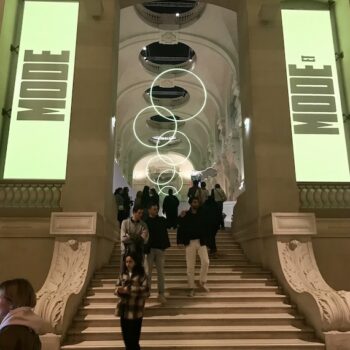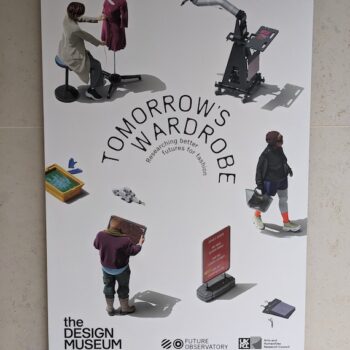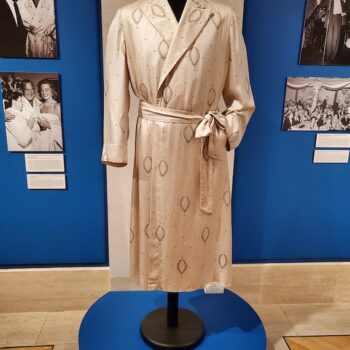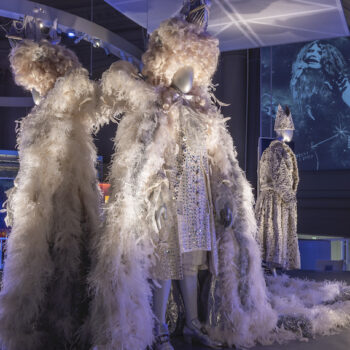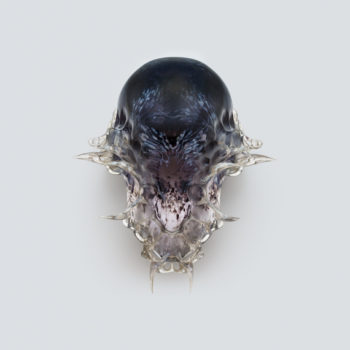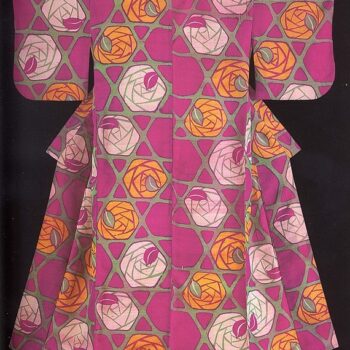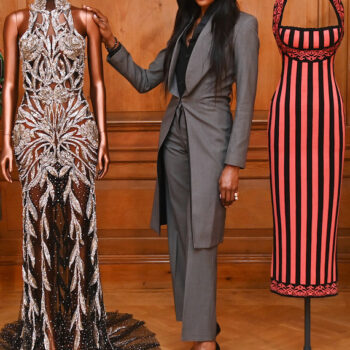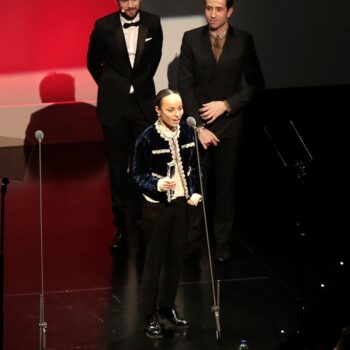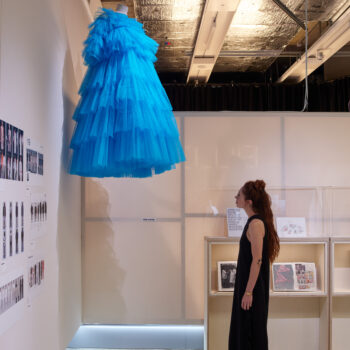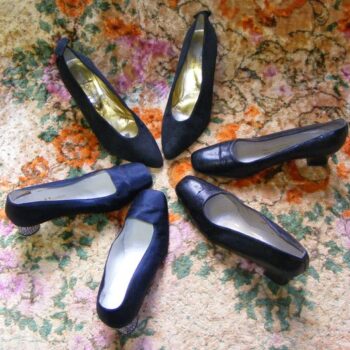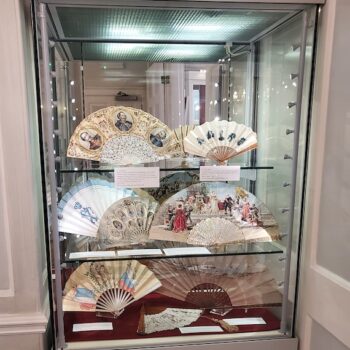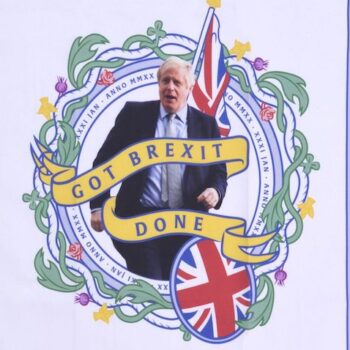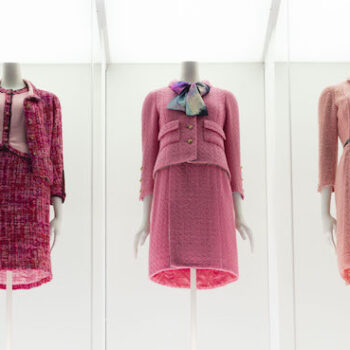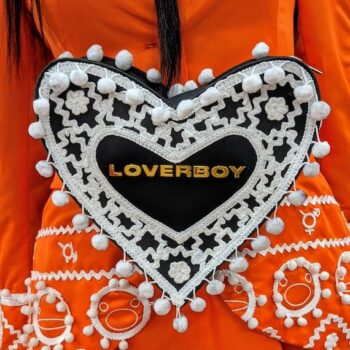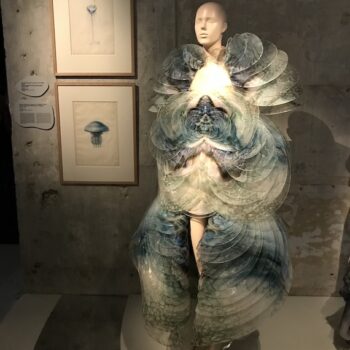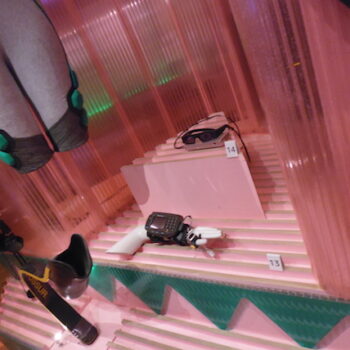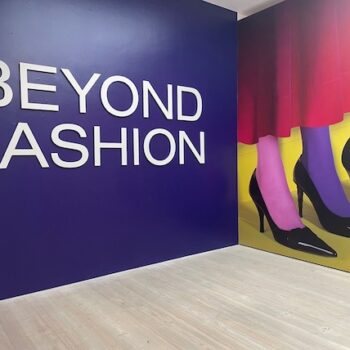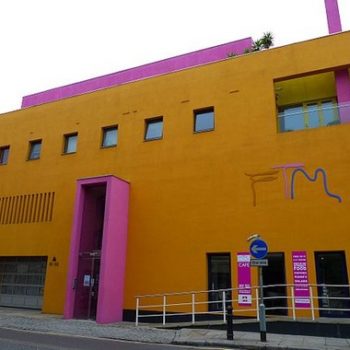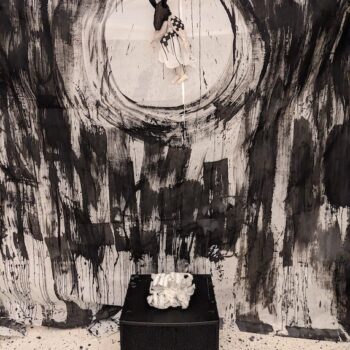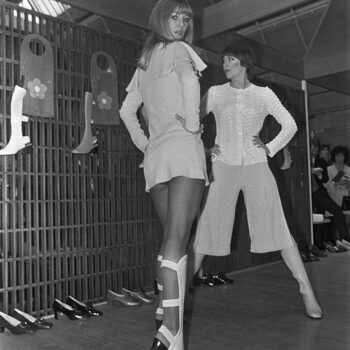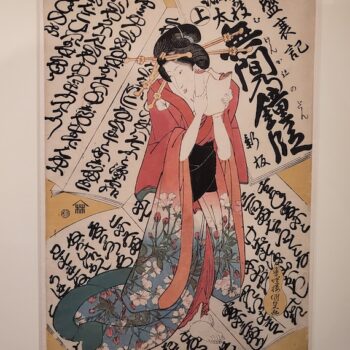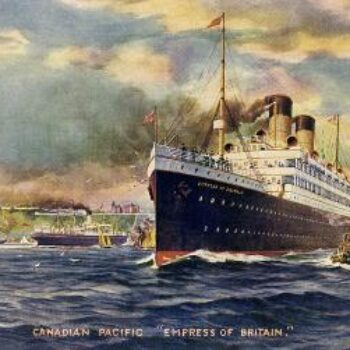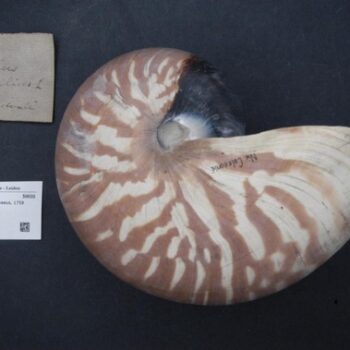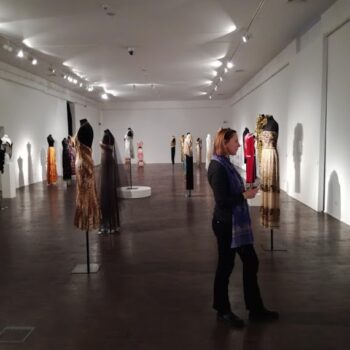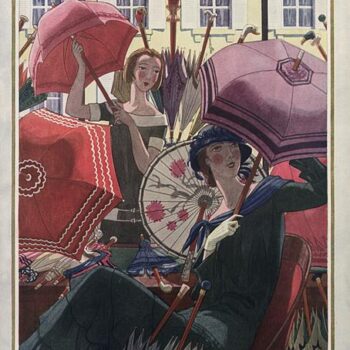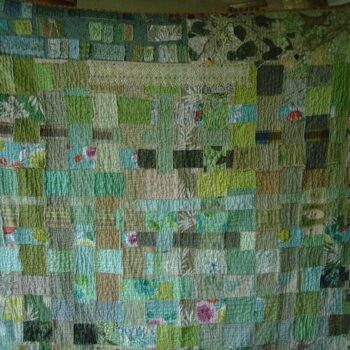Kaffe Fassett Exhibition – The Power of Pattern Review
December 19, 2022Kaffe Fassett is primarily known to me as a knitwear designer. His complex, infinitely hued jumpers and cardigans were a memorable feature of my childhood. But in book form only, because to knit one of his cosy designs would require a lot of small amounts of expensive wool, which you can’t really substitute because the shades are so precise. It just wouldn’t be the same if you got any old bargain price acrylics.
Luckily, the London-based Californian designer published a lot of knitting books to gaze upon. He also started making quilting books and this is what this exhibition is mainly about – quilting. But surprisingly, despite the exhibition title, most of the quilts aren’t designed or made by Fassett here. The makers are inspired by him.
The Kaffe Fassett Collective
On entering, the side room has been completely upholstered in a vibrant hot pink, red and yellow floral fabric and serves as a viewing room for a short video introduction to the artist-designer. Fassett trained as a painter in the 1960s. He initially painted depictions of white ceramics. Gradually, coloured and patterned ceramics crept into his watercolours. This fostered his appreciation of colour and pattern.
After a long career, he now works with two other artists on collections of quilt fabrics, Brandon Mably and Philip Jacobs. Together, they are the Kaffe Fassett Collective. It’s not mentioned here, I don’t think, but Mably is his husband and they live together. What is mentioned is that the studio is in the house that they both live in and Jacobs works there too. Are they a thrupple? I like to think so.
It’s very interesting because the artist’s styles are very different from one another. Jacobs, in particular, creates rather fussy botanical drawings. Fassett merrily changes the semi-realistic tones of greens and gentle pinks to orange and fuchsias so that an entirely different effect is created. Some designs appear to sustain infinite colour ways.
Kaffe Fassett and the case of the missing work
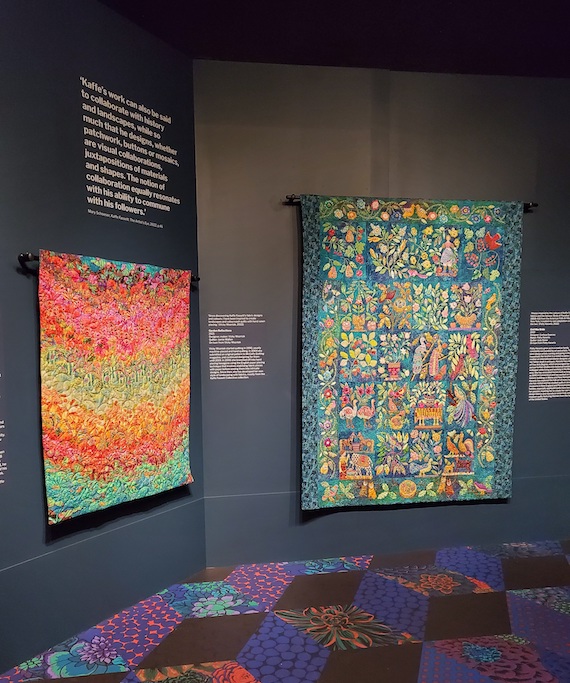
Kaffe Fassett Exhibition – The power of Pattern at the Fashion and Textile Museum. Installation photos Genevieve Jones.
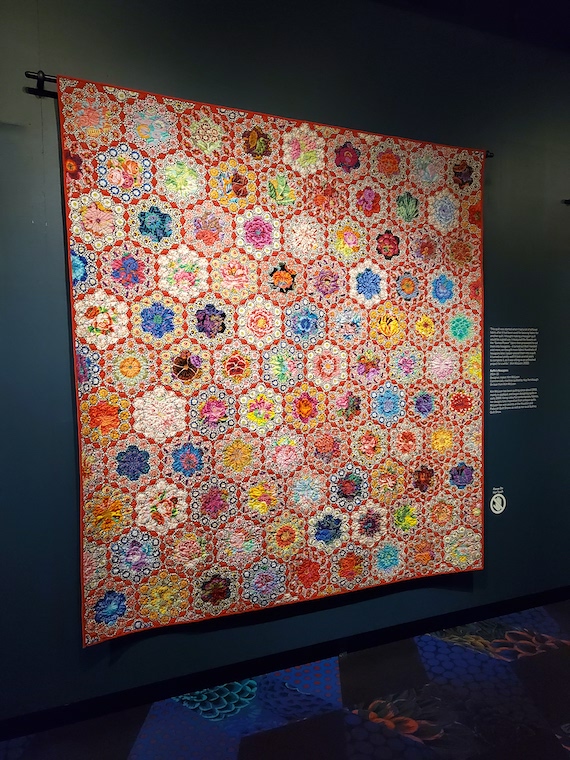
Kaffe Fassett – The power of Pattern at the Fashion and Textile Museum. Installation photos Genevieve Jones.
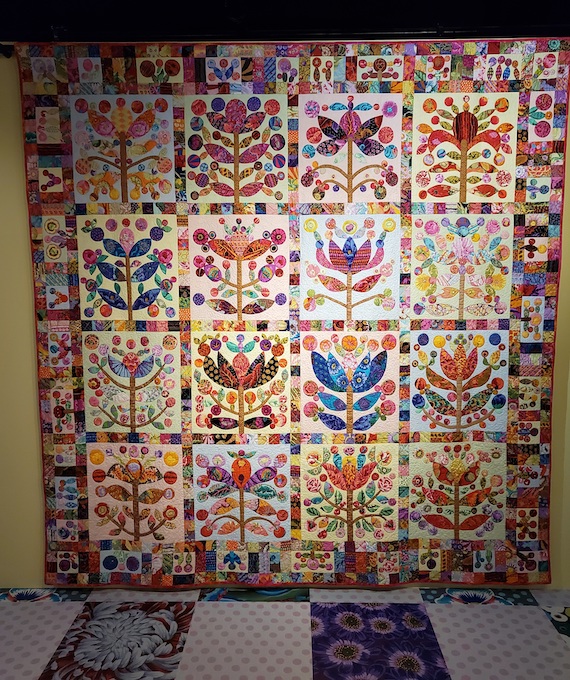
Kaffe Fassett – The power of Pattern at the Fashion and Textile Museum. Installation photos Genevieve Jones.
Kaffe Fassett has had a show at the Fashion and Textile Museum before, in 2013. Furthermore he has also shown at the V&A, in the first one-man show by a living textile artist, in 1988. He has had numerous other shows worldwide. They all featured work designed by him, and often made by his own hands. So I have to be frank, I don’t properly understand the purpose of this exhibition, which bears his name but features barely any of his work. Is he bored of it?
I have seen this before, where an older, established artist is approached for a show but wants to lend their name to less well-known artists. Which is generous of them, but very frustrating for fans. Is this what’s happened here? Also very curious is that there is no knitting in the show at all. A copyright issue? Or just a focus on selling his quilting fabrics, which are created and produced by the Collective? They are certainly beautiful.
Inspiring to others
The quilts on the walls have come from all over the world. Some of the designs are traditional American ones, based on 19th Century block quilts. These are harmonious patterns, and work within the limitations of small geometric repeats. Quilts like this were originally created with scraps of fabric from offcuts and outgrown dresses and shirts. Therefore it was sometimes hard to achieve harmony using just small, un-matching leftovers. These are made with Kaffe’s fabrics, which are designed to go together whilst preserving a not-too-uniform look, so that the work has a blend of traditional and new.
Some of these exhibits are part-pieced together and part-appliquéd, where the design is cut out and sewn on top. There is one that depicts floral jugs and vases, and one that depicts a rhino, which is a significantly far less traditional subject.
Excellent Curation
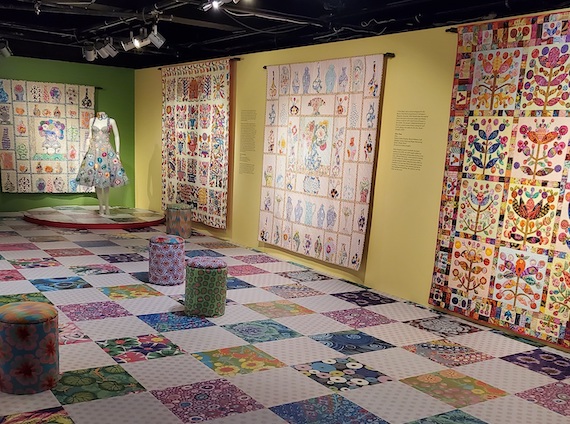
Kaffe Fassett – The power of Pattern at the Fashion and Textile Museum. Installation photos Genevieve Jones.
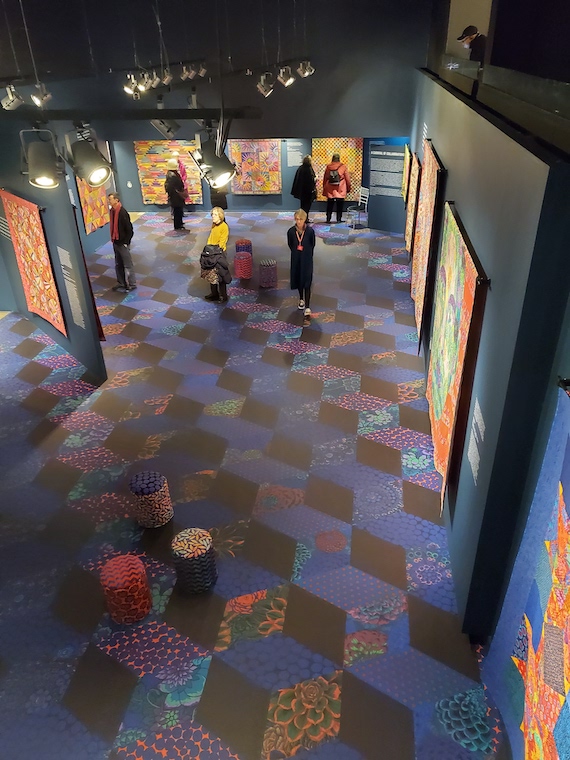
Kaffe Fassett – The power of Pattern at the Fashion and Textile Museum. Installation photos Genevieve Jones.
The exhibition design is striking. On the ground floor, each quilt is spotlit against a dark grey-blue background. Therefore the colourful quilts stand out with a jewel-like vibrancy. Furthermore, the floor has vinyl printed like a traditional block quilt, in tones of blue and black with splashes of florals. But the curation does not overshadow the works. On the first floor the colour scheme is lighter, with pastel yellow and green walls complemented by cream and multicoloured vinyl on the floor. It’s charming. Dennis Northdruft, the head curator at the Fashion and Textile Museum, always does an especially good job.
Kaffe Fassett Collective
Upstairs a selection of the team’s work is shown in the process of design.
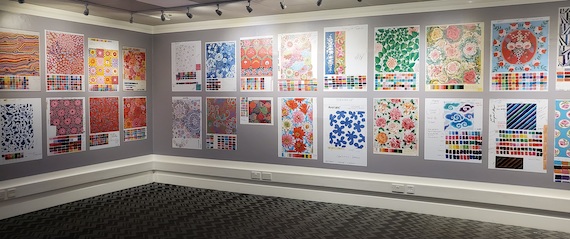
Kaffe Fassett – The power of Pattern at the Fashion and Textile Museum. Installation photos Genevieve Jones.
Needlepoint Design
A selection of cushions, shirts and other items are shown that have been designed by the team.
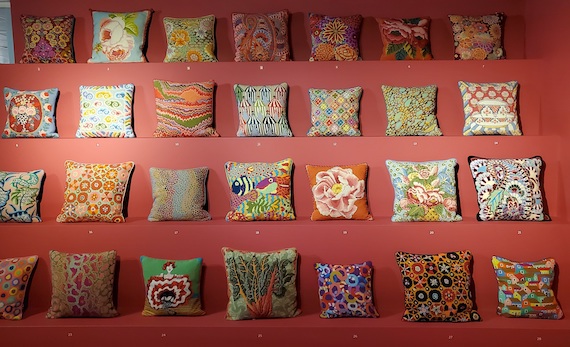
Kaffe Fassett – The power of Pattern at the Fashion and Textile Museum. Installation photos Genevieve Jones.
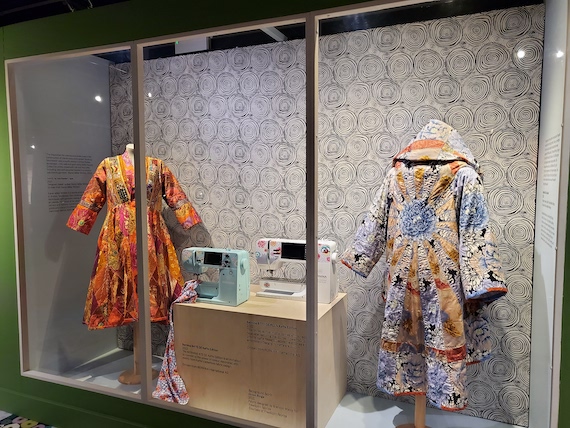
Kaffe Fassett – The power of Pattern at the Fashion and Textile Museum. Installation photos Genevieve Jones.
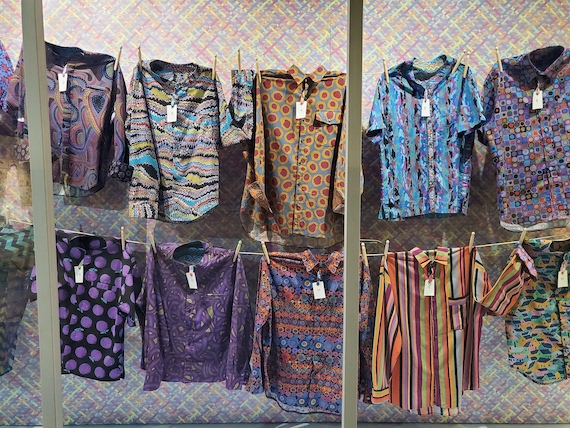
Kaffe Fassett – The power of Pattern at the Fashion and Textile Museum. Installation photos Genevieve Jones.



